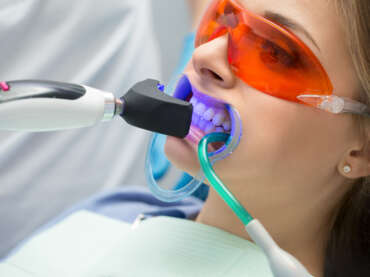What is Rhinoplasty?
Rhinoplasty is a procedure that changes the appearance of the nose or improves breathing.
Rhinoplasty can change the size, shape, or proportions of your nose. It may be done to repair deformities from an injury, correct a birth defect or improve some breathing difficulties.
Rhinoplasty is one of the most demanded cosmetic and plastic surgeries because the nose is the most critical part of the face. Therefore, it negatively affects the person’s self-image, confidence, and social life.
Rhinoplasty Procedure
BEFORE OPERATION
The surgeon will evaluate your condition and conduct appropriate medical examinations before the operation.
The management of expectations is an essential part of the process regardless of whether the surgery is medical or cosmetic.
your surgeon will consider your other facial features, the skin on your nose, and what you would like to change.
DURING OPERATION
The operation is performed under general anesthesia for approximately one to two hours.
The upper portion of the structure of the nose is bone, and the lower portion is cartilage
The surgeon makes a small incision between the nostrils and then begins to change the shape of the nasal bones or cartilage as needed and as planned in advance.
The surgeon can use cartilage from your rib, implants, or bone from other parts of your body. After these changes are made, the surgeon places the nose’s skin and tissue back and stitches the incisions in your nose. If the wall between the two sides of the nose (septum) is bent or crooked (deviated), the surgeon can also correct it to improve breathing.
The surgery may include breaking, trimming, or shaving some parts of bones.
AFTER OPERATION
You can resume your daily routine just 7 days after surgery.
Swelling and bleeding are very slight, they aren’t long-lasting and will begin to fade away within 7 days of recovery.
The nasal packing will be safely removed by your surgeon a week after the surgery.
After 6 weeks, your bones will have completely healed and your nose will begin to take its new shape.
It is expected that you may feel sensationally numb around your nose area, this will not last and you will regain the sense within 12 months.


Rhinoplasty Procedure
BEFORE OPERATION
The surgeon will evaluate your condition and conduct appropriate medical examinations before the operation.
The management of expectations is an essential part of the process regardless of whether the surgery is medical or cosmetic.
your surgeon will consider your other facial features, the skin on your nose, and what you would like to change.
DURING OPERATION
The operation is performed under general anesthesia for approximately one to two hours.
The upper portion of the structure of the nose is bone, and the lower portion is cartilage
The surgeon makes a small incision between the nostrils and then begins to change the shape of the nasal bones or cartilage as needed and as planned in advance.
The surgeon can use cartilage from your rib, implants, or bone from other parts of your body. After these changes are made, the surgeon places the nose’s skin and tissue back and stitches the incisions in your nose. If the wall between the two sides of the nose (septum) is bent or crooked (deviated), the surgeon can also correct it to improve breathing.
The surgery may include breaking, trimming, or shaving some parts of bones.
AFTER OPERATION
You can resume your daily routine just 7 days after surgery.
Swelling and bleeding are very slight, they aren’t long-lasting and will begin to fade away within 7 days of recovery.
The nasal packing will be safely removed by your surgeon a week after the surgery.
After 6 weeks, your bones will have completely healed and your nose will begin to take its new shape.
It is expected that you may feel sensationally numb around your nose area, this will not last and you will regain the sense within 12 months.

Who is a good candidate for rhinoplasty?
- The growth of your face is complete
- healthy
- non-smoker
- You have realistic expectations
What are the risks of rhinoplasty?
- breathing difficulties
- infection
- Anesthesia risks
- Unsatisfactory nose appearance
- poor wound healing
Nose job before and after



how much is a nose job?
The prices of Rhinoplasty differ from one patient to another, as the technique
used and the areas to be suctioned play a big role in the price, and the prices of surgery
may vary if combined with other surgeries.


Free Consultation
[contact-form-7 id=”32565″]FAQ
How long do you have to stay in Turkey after a nose job?
The required time for a nose job in Turkey is usually seven nights.
How long is rhinoplasty recovery?
It takes about 6 weeks for the nasal bones to heal after surgery. At this time, avoid strenuous exercise
is it safe to get a nose job in turkey?
Every surgery has risks, so we advise you to ask if the surgeon has experience before, and is the Turkish Ministry of Health licenses the hospital, and if there are pictures of other patients they performed (before and after)
Can I laugh after rhinoplasty?
Although laughing after rhinoplasty seems like a rather natural, unavoidable thing to do, experts generally agree that while occasional smiling or laughing will probably not compromise the results of your surgery

BLOG FEED




